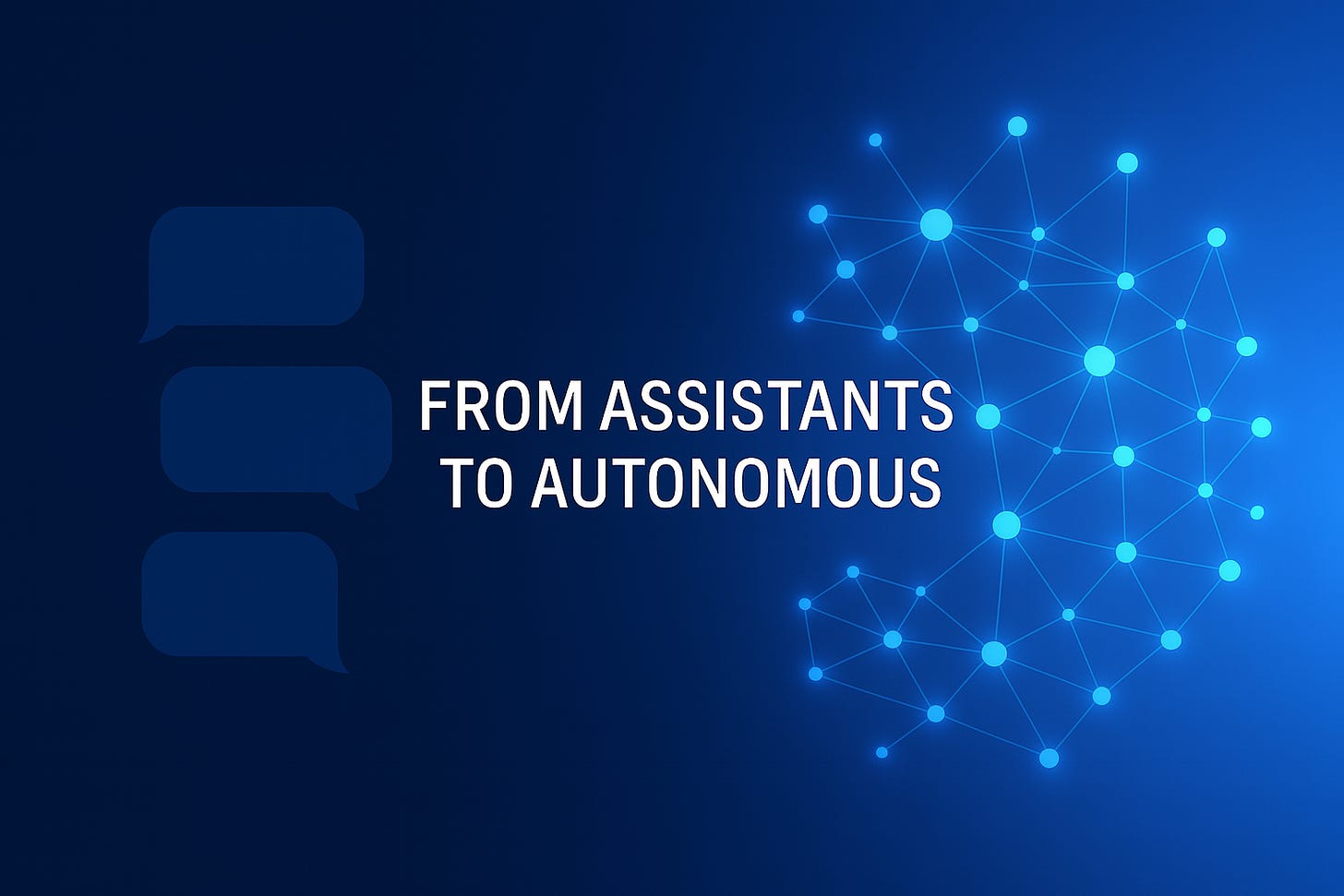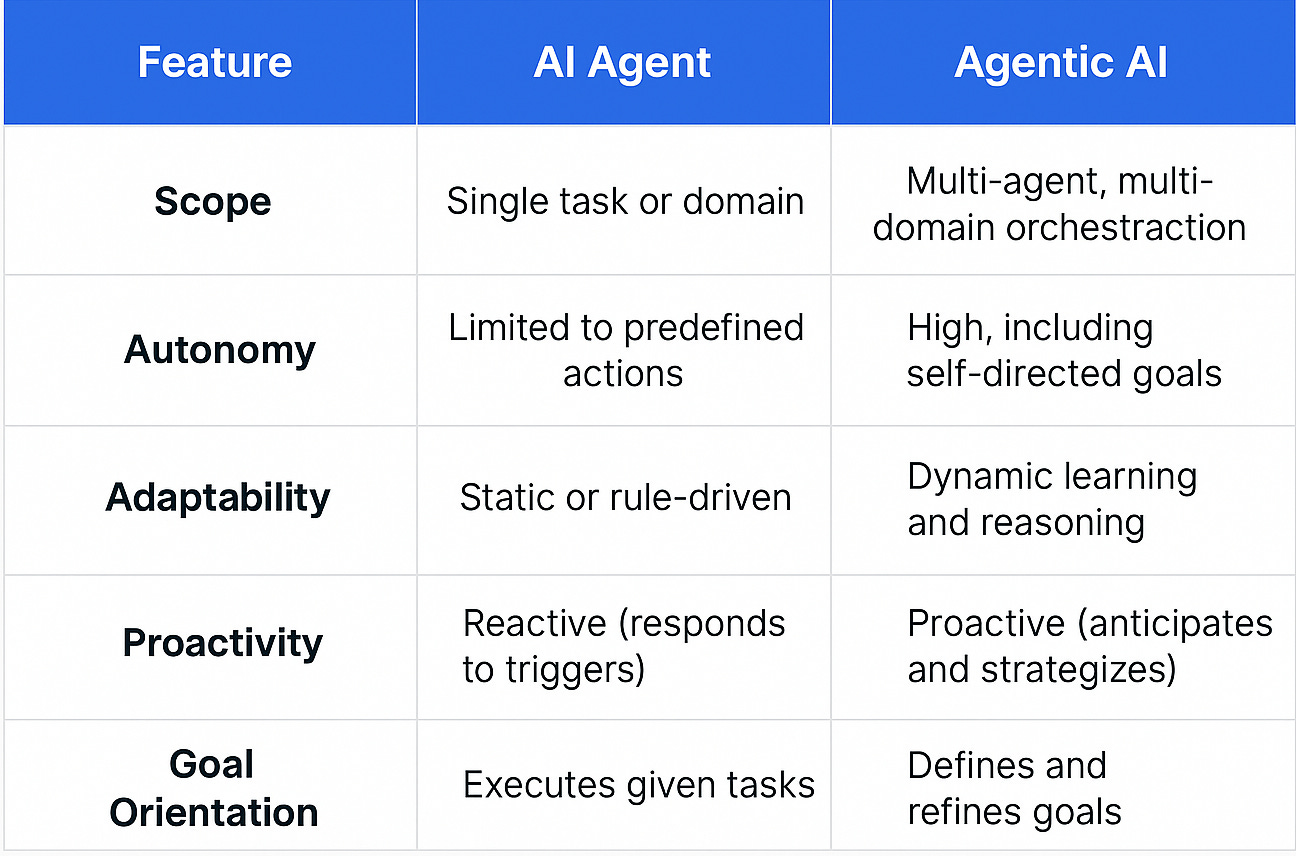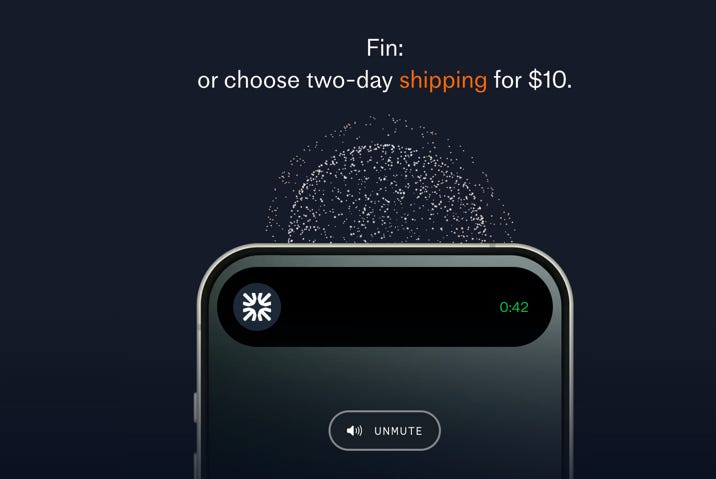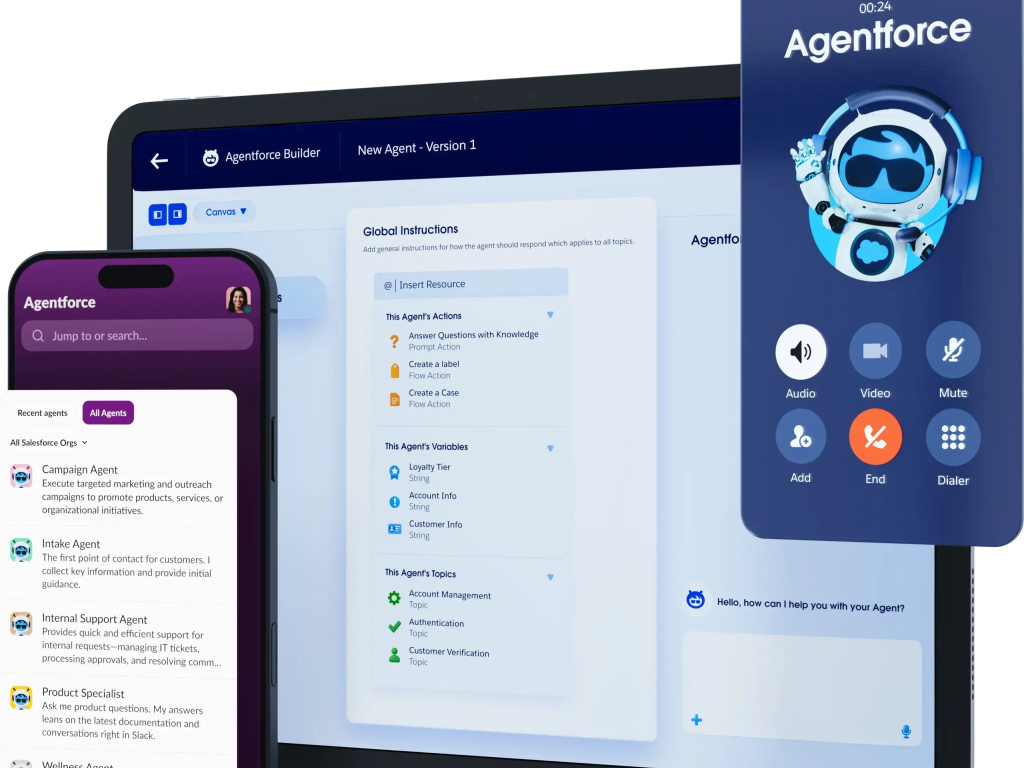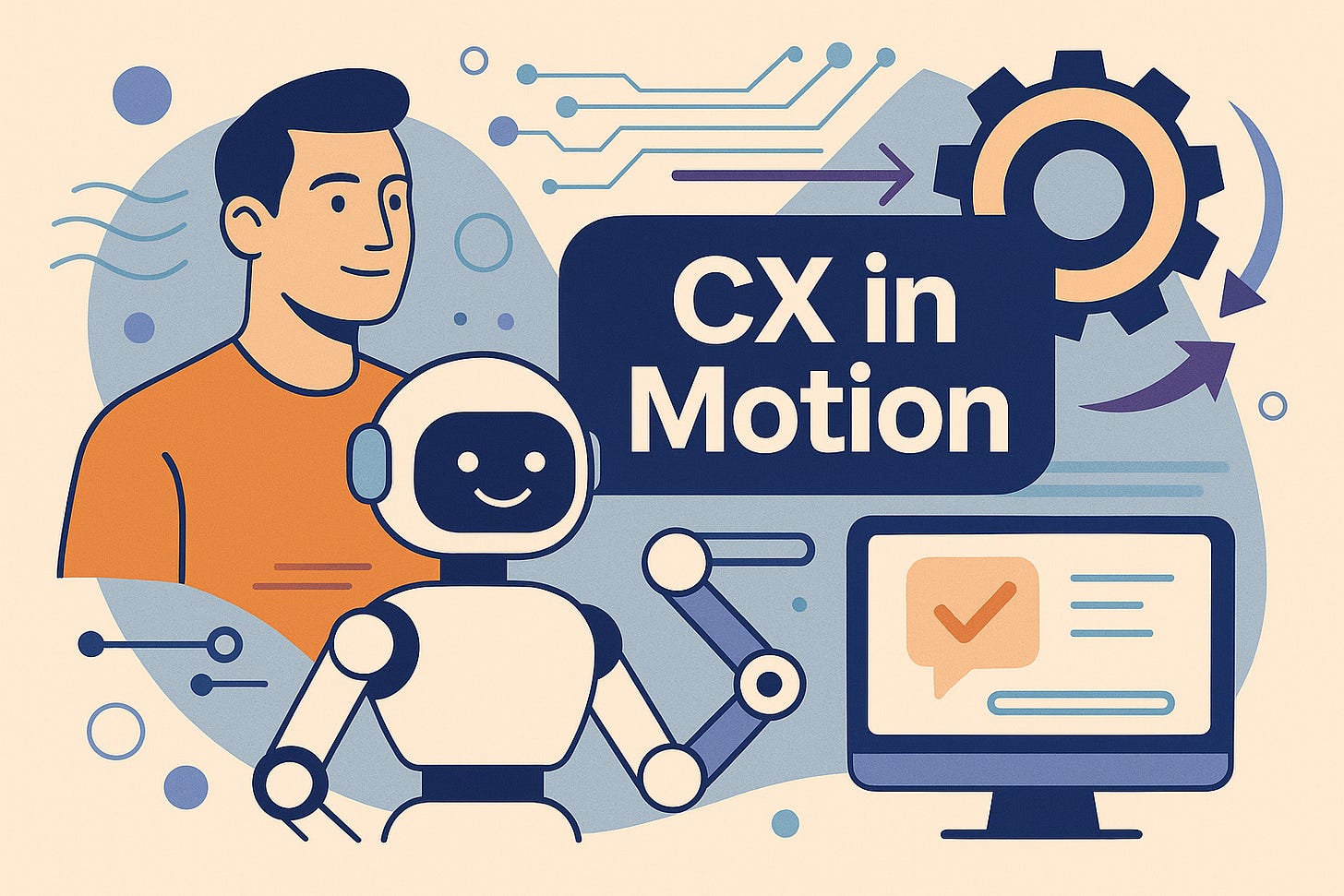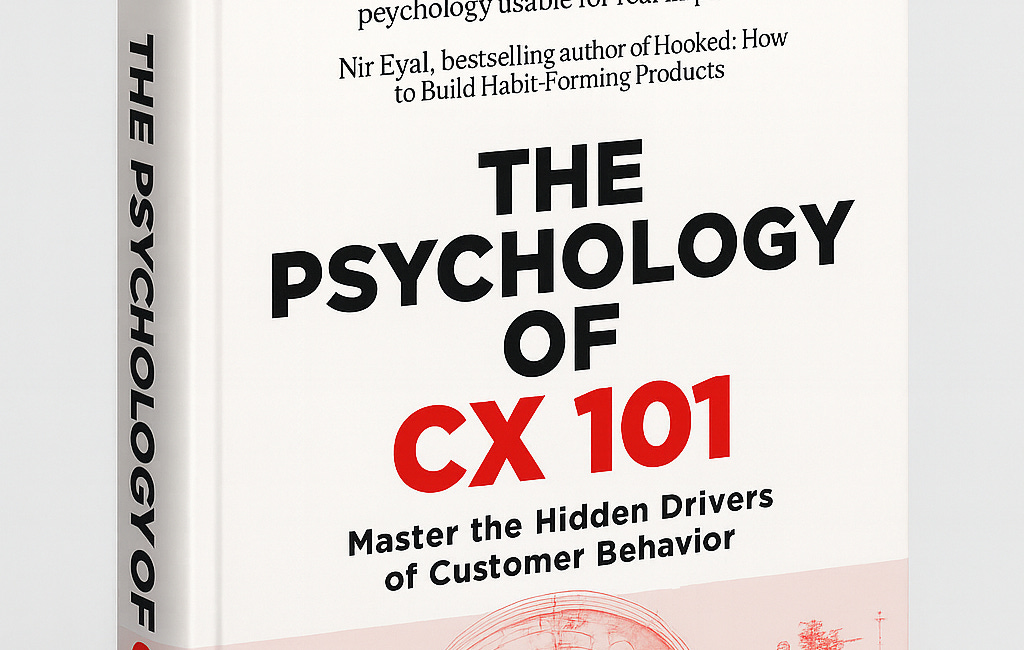This week’s Decoding Customer Experience is brought to you by Enterpret
Ready to turn Intelligence into Intuition - Book a Demo
🧭 Two Terms. One Big Difference.
If you’re in CX, you’ve probably heard both terms—AI Agent and Agentic AI—thrown around like they’re interchangeable.
They’re not.
They represent two entirely different stages of intelligence.
One’s the assistant that follows your lead.
The other’s the strategist that thinks, plans, and acts on your behalf.
And understanding that difference will define how your customer experience evolves over the next few years.
⚙️ The Assistive Era: AI Agents
We’ve lived with AI Agents for a while now.
They’re the chatbots that answer questions, the email assistants that schedule meetings, the systems that follow rules and stay inside the lines.
They’re helpful—until the problem falls outside the script.
AI Agents are:
Focused on one task at a time
Triggered by a command or event
Dependent on the data and logic you give them
Great at following instructions—but not setting their own
They’re the dependable employee who never complains and never surprises you. But they’ll never take initiative either.
In CX, an AI Agent resets a password when asked.
Agentic AI notices the customer can’t log in—and fixes it before they ask.
🚀 The Autonomous Era: Agentic AI
Now we’re entering the autonomous era—what I call the Agentic Age.
Agentic AI doesn’t just perform tasks. It coordinates them. It connects systems, reasons through context, and acts toward an outcome you define.
It’s the difference between intelligence and agency.
Between responding and anticipating.
Agentic AI can:
Coordinate multiple agents or subsystems
Learn continuously from results
Plan actions proactively
Adjust its strategy based on outcomes
It’s like having a teammate who doesn’t just follow directions—they know the goal, see the obstacles, and move the team forward.
🧩 The Comparison at a Glance
Think of AI Agents as employees who follow the handbook.
Agentic AI is the manager who rewrites it when the customer needs change.
💡 Why It Matters for CX
This isn’t just a technology shift—it’s a leadership one.
CX teams that stick with AI Agents will stay efficient.
Teams that embrace Agentic AI will become anticipatory.
That’s the real win: not faster service, but smarter service.
Agentic AI lets your company do what humans do best—listen, empathize, create—while it handles what machines do best—analyze, execute, and learn.
It’s the partnership of empathy and autonomy that will define the next generation of CX excellence.
🧠 Tools to Watch
Here’s a look at the ten tools leading in each category—those shaping the move from assistive to autonomous CX.
🔧 AI Agents (Assistive Era)
Reliable helpers. They execute, automate, and support within defined limits.
Intercom – Fin: Fin is built to handle the routine—interpret what the customer is asking, reference your knowledge base, and often resolve the ticket without human intervention. It learns your tone, handles multiple languages, and gets smarter over time.
Drift: Think of this as your AI chat evangelist for marketing/sales. Drift engages visitors, qualifies leads, and routes them intelligently instead of waiting for them to raise a hand.
LivePerson: A messaging-centric engine that automates conversations across channels, supports human handoffs, and frees agents from simple back-and-forth.
IBM watsonx Assistant: Enterprise-grade, mature, trusted. It builds virtual assistants that connect to voice and chat, integrate with back-end systems, and keep things secure.
Kore.ai: If you want to build shortcuts for HR, IT or CX teams without coding every API, Kore gives you the tools. It’s conversational AI made accessible.
Cognigy.ai: Targets the contact-centre world, bringing voice + chat automation together with strength in integrations and workflow orchestration.
Google Dialogflow: Developers’ favourite for NLP-powered bots and assistants. Recognises intent, handles routing, works across voice and chat.
Microsoft Copilot for Service: More of an assistant than an autonomous actor—summarises tickets, suggests next steps, nudges agents rather than replacing them.
Zoho Zia: Built into the Zoho ecosystem—Zia helps prioritize tickets, recommends replies and spots trends, especially useful if you’re already in Zoho’s world.
Sprinklr AI+: Designed for brands with huge volume across social and digital channels—this one automates listening, routing and helps manage scale more than depth of decision-making.
🤖 Agentic AI (Autonomous Era)
The new wave. These systems think, plan, and act without waiting for human prompts.
Salesforce – Einstein Service Agent / Agentforce: Built for outcome-focused service. Agents can handle refunds, account changes or escalations entirely—and pivot when needed.
Zendesk AI Agents: A multi-agent approach inside support: some agents detect intent, others plan the flow, others carry out the action.
Genesys Cloud CX / AI: Here’s where voice + digital + backend logic meet: these agents keep the conversation context and trigger next-step workflows.
Freshworks – Freddy AI: Integrated into Freshdesk, Freddy both chats and executes. The result: fewer response delays, more self-service.
Ada: Designed for branded autonomy—updates accounts, processes orders, and messages customers proactively when things don’t go to plan.
Forethought – Agatha: More of a system than a bot—multiple reasoning agents working in tandem, diagnosing, solving and escalating under one roof.
Moveworks: Enterprise-scale autonomy: connecting to 100+ systems so agents can execute real actions (not just chatter) across internal and external CX.
Aisera: A broad platform automating across service domains (IT, HR, CX) with governance built in—ideal when autonomy must be safe, auditable and repeatable.
Sierra AI: Builds branded agents that transact—not just chat. Think: order edits, real-time account changes, all in your brand’s voice.
Maven AGI: High-ambition platform promising 90%+ ticket resolution with transparent decision logic—putting accountability into autonomy.
🪜 How to Move from Agents to Agency
Every CX organization is somewhere between automation and autonomy.
Here’s how to move from reacting to reasoning — from AI that assists to AI that acts.
1. Map your stack
Before you can evolve, you need visibility.
Audit every customer-facing workflow where AI shows up — chatbots, ticket routing, content recommendations, IVR systems.
Ask three questions:
Where is AI reactive (waiting for input)?
Where could AI act autonomously (taking initiative)?
Where is human effort wasted on repeatable tasks?
Then, tag your systems as Assistive, Augmented, or Autonomous.
That heatmap will tell you exactly where your first agentic opportunity lives.
2. Define your boundaries
Autonomy without guardrails becomes chaos.
Clarify what “autonomous” means for your brand.
Decide:
What decisions can AI make without human sign-off?
What types of customer actions require human empathy or oversight?
How should the system explain its reasoning when things go wrong?
Write this down as an AI Responsibility Matrix.
If you can’t explain where AI ends and human accountability begins, you’re not ready for agentic systems yet.
3. Start with orchestration
You don’t need a brand-new platform to go agentic.
Start by connecting the systems you already use.
Most companies already run multiple AI agents — a chatbot, CRM insights, ticket automation, recommendation engines.
The first step toward agency is connecting them into a shared workflow.
Example:
Let your chatbot trigger your CRM to update the ticket, your knowledge engine to verify the solution, and your QA bot to analyze the tone.
That’s orchestration — and it’s the bridge from automation to autonomy.
4. Redefine metrics
Most companies measure AI by volume handled. That’s the wrong metric for autonomy.
Shift your focus from activity to outcomes.
Ask:
Did the system prevent the issue altogether?
Did it improve the customer’s next experience?
Did it reduce manual intervention sustainably?
Track prevented issues, not just resolved ones.
That’s how you prove your AI is truly acting on behalf of your customer — not just answering faster.
5. Upskill your team
Agentic AI changes what leadership and frontline roles look like.
The skill now isn’t how to use AI, it’s how to guide it.
Teach teams to:
Audit AI outputs for bias and tone
Understand system logic and escalation triggers
Adjust workflows based on outcomes, not assumptions
This builds trust — and trust is the real operating system of autonomous CX.
🧭 Final Takeaway
AI Agents made automation possible.
Agentic AI makes adaptation possible.
The future of CX belongs to leaders who understand that the real power of AI isn’t in faster replies — it’s in systems that can think ahead and act with purpose.
Because the next great customer experience won’t just respond to your customers.
It will work for them.
What Successful CX Leaders Do on Sundays
DCX Links: Six must-read picks to fuel your leadership journey delivered every Sunday morning. Dive into the latest edition now!
👋 Please Reach Out
I created this newsletter to help customer-obsessed pros like you deliver exceptional experiences and tackle challenges head-on. But honestly? The best part is connecting with awesome, like-minded people—just like you! 😊
Here’s how you can get involved:
Got feedback? Tell me what’s working, what’s not, or what you’d love to see next.
Stuck on something? Whether it’s a CX challenge, strategy question, or team issue, hit me up—I’m here to help.
Just want to say hi? Seriously, don’t be shy. I’d love to connect, share ideas, or even swap success stories.
Your input keeps this newsletter fresh and valuable. Let’s start a conversation—email me, DM me, or comment anytime. Can’t wait to hear from you!
— Mark
www.marklevy.co
Follow me on Linkedin
Thanks for being here. I’ll see you next Tuesday at 8:15 am ET.
👉 If you enjoyed this newsletter and value this work, please consider forwarding it to your friends and colleagues or sharing it on social media. New to DCX? Sign Up.
✉️ Join 1,420+ CX Leaders Who Get the DCX Newsletter First
The DCX Newsletter helps CX professionals stay ahead of change with insights that educate, inspire, and coach you toward action.
Subscribe to get the next issue straight to your inbox—and keep building experiences that move before your customers do.




